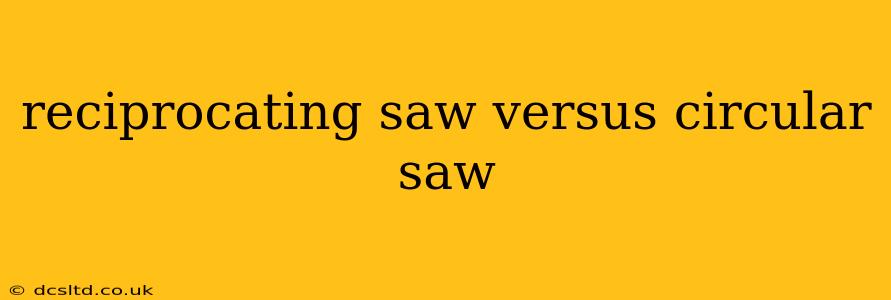Choosing the right saw for a job can be tricky. Two popular choices often leave DIYers and professionals wondering which is better: the reciprocating saw (also known as a sawzall) and the circular saw. This in-depth comparison will help you understand the strengths and weaknesses of each, enabling you to make an informed decision for your next project.
What is a Reciprocating Saw?
A reciprocating saw, or sawzall, uses a back-and-forth blade motion to cut through various materials. Its versatility is its biggest advantage. The blades are easily interchangeable, allowing you to tackle wood, metal, plastic, and even drywall with the right blade. Its design also makes it ideal for cutting in tight spaces or awkward angles, something a circular saw struggles with.
What is a Circular Saw?
A circular saw utilizes a spinning circular blade to make cuts. It’s primarily designed for straight cuts in wood, although specific blades can extend its capabilities to other materials. Known for its speed and efficiency on straight cuts in wood, it's a staple in many workshops and construction sites.
H2: What are the key differences between a reciprocating saw and a circular saw?
This is a fundamental question when comparing these two power tools. The core differences lie in their cutting action, applications, and resulting cut quality:
-
Cutting Action: The reciprocating saw uses a reciprocating (back-and-forth) blade motion, while the circular saw employs a rapidly spinning circular blade. This difference significantly impacts the type of cuts each can effectively perform.
-
Cut Type: Circular saws excel at straight cuts, making them ideal for ripping lumber or making precise crosscuts. Reciprocating saws are far more versatile, capable of making curved cuts, plunge cuts, and demolitions cuts.
-
Material Versatility: While both can handle wood, reciprocating saws significantly outperform circular saws in material versatility. They can easily cut through metal, plastic, PVC pipes, and various other materials with the correct blade.
-
Accuracy and Precision: For straight cuts, the circular saw generally offers greater accuracy and precision. Reciprocating saws are less precise for straight cuts, but their versatility often outweighs this limitation.
-
Control and Maneuverability: Reciprocating saws offer superior maneuverability, particularly in tight spaces and awkward positions. Their smaller size and blade design make them much easier to control in complex cutting scenarios. Circular saws, while powerful, require more space and careful handling for accurate cuts.
H2: Which saw is better for cutting wood?
For straight cuts in wood, a circular saw is generally the better choice. Its design prioritizes speed and precision in these situations, leading to faster and cleaner cuts. However, for curved cuts, plunge cuts, or intricate shaping, a reciprocating saw is more suitable.
H2: Which saw is better for cutting metal?
The reciprocating saw is the clear winner for cutting metal. While specialized circular saws exist for metal, they are less common and generally less versatile than a reciprocating saw equipped with the appropriate metal-cutting blade.
H2: Which saw is better for demolition work?
For demolition, the reciprocating saw is usually preferred. Its ability to cut through various materials (including embedded nails) and its versatility in confined spaces make it a powerful tool for demolition projects.
H2: Which saw is easier to use?
This depends on the user's experience and the specific task. For straightforward straight cuts in wood, a circular saw might be easier for experienced users. However, beginners might find the reciprocating saw easier to control, especially for less precise cuts.
H2: Which saw is safer to use?
Both saws pose safety risks if not used correctly. Safety precautions, including wearing appropriate eye and hearing protection, are crucial for both. The risk associated with kickback is higher with a circular saw, necessitating careful handling and understanding of safety procedures.
Conclusion:
Ultimately, the "better" saw depends entirely on the application. A circular saw excels at fast, accurate straight cuts in wood, while a reciprocating saw shines in its versatility, tackling various materials and complex cuts with ease. Often, the best approach is to own both saws to cover a wider range of projects and needs.
